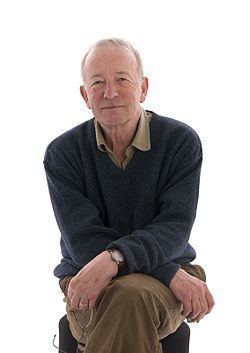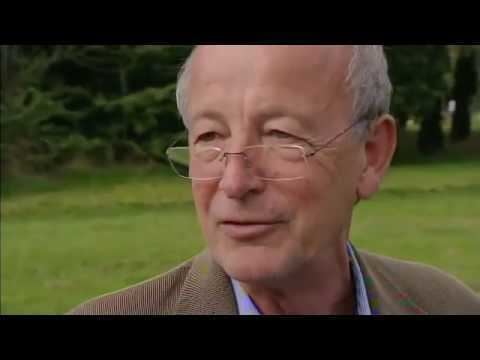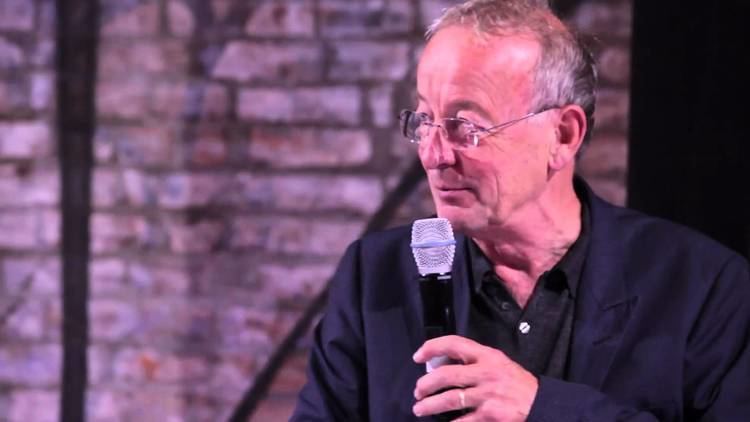Residence Cambridge, England Name Nicholas Humphrey Nationality English Role Psychologist | Cousins Julia Riley | |
 | ||
Born Nicholas Keynes Humphrey 27 March 1943 (age 82) ( 1943-03-27 ) Spouse Ayla Kohn (m. 1994), Caroline Humphrey (m. 1967–1977) Books Soul Dust: The Magic of Consciousness, Soul Searching: Human Nature and Supernatural Belief, Four Minutes to Midnight Parents Janet Humphrey, John H. Humphrey Grandparents Archibald Hill, Margaret Keynes, H. A. Humphrey Similar People Martin Rees, Caroline Humphrey, Dylan Evans, Archibald Hill, C H Waddington | ||
Nicholas humphrey interview 1 4 richard dawkins
Nicholas Keynes Humphrey (born 27 March 1943) is an English psychologist, based in Cambridge, who is known for his work on the evolution of human intelligence and consciousness. His interests are wide-ranging. He studied mountain gorillas with Dian Fossey in Rwanda, he was the first to demonstrate the existence of "blindsight" after brain damage in monkeys, he proposed the celebrated theory of the "social function of intellect" and he is the only scientist ever to edit the literary journal Granta.
Contents
- Nicholas humphrey interview 1 4 richard dawkins
- Ask nicholas humphrey about consciousness
- Family
- Early career
- Work in evolutionary psychology and philosophy of mind
- Other work
- Video links
- Journal articles
- Other works
- References

Humphrey played a significant role in the anti-nuclear movement in the late 1970s and delivered the BBC Bronowski memorial lecture titled "Four Minutes to Midnight" in 1981.

His ten books include Consciousness Regained, The Inner Eye, A History of the Mind, Leaps of Faith, The Mind Made Flesh, Seeing Red, and Soul Dust. He has been the recipient of several honours, including the Martin Luther King Memorial Prize, the Pufendorf medal and the British Psychological Society's book award.

He has been lecturer in psychology at Oxford, assistant director of the Subdepartment of Animal Behaviour at Cambridge, senior research fellow at Cambridge, professor of psychology at the New School for Social Research, New York, and school professor at the London School of Economics.

Ask nicholas humphrey about consciousness
Family
Humphrey is the son of the immunologist John H. Humphrey and his wife Janet Humphrey (née Hill), daughter of the Nobel Prize–winning physiologist Archibald Hill. His great uncle was the economist John Maynard Keynes. He married Caroline Waddington, daughter of C. H. Waddington in 1967 (divorced 1977). From 1977 to 1984 he was the partner of the English actress Susannah York. He married Ayla Kohn in 1994, with whom he has two children Ada 1995 and Samuel 1997.
Early career
Nicholas Humphrey was educated at Westminster School (1956–61), and Trinity College, Cambridge (1961–67).
His doctoral research at Cambridge, supervised by Lawrence Weiskrantz, was on the neuropsychology of vision in primates. He made the first single cell recordings from the superior colliculus of monkeys, and discovered the existence of a previously unsuspected capacity for vision after total lesions of the striate cortex (a capacity which, when it was later confirmed in human beings, came to be called "blindsight").
On moving to Oxford, he turned his attention to evolutionary aesthetics. He did research on monkey visual preferences (especially colour preferences) and wrote an essay "The Illusion of beauty", which, as a radio broadcast, won the Glaxo Science Writers Prize in 1980.
Work in evolutionary psychology and philosophy of mind
He returned to Cambridge, to the Sub Department of Animal Behaviour in 1970, and there met Dian Fossey, who invited him to spend three months at her gorilla study camp in Rwanda. His experience with the gorillas, and a subsequent visit to Richard Leakey's field-site on Lake Turkana, set Humphrey thinking about how cognitive skills – intelligence and consciousness – could have arisen as an adaption to social life. In 1976 he wrote an essay titled "The Social Function of Intellect", which is widely regarded as one of the foundational works of evolutionary psychology and the basis for Machiavellian intelligence theory. This paper formed the basis of his first book Consciousness Regained: Chapters in the Development of Mind (1983).
In 1984 Humphrey left his academic post at Cambridge to work on his Channel 4 television series "The Inner Eye" on the development of the human mind. This series was finished in 1986 with the release of a book of the same name.
In 1987, Daniel Dennett invited Humphrey to work with him at his Center for Cognitive Studies at Tufts University. They worked on developing an empirically based theory of consciousness, and undertook a study on Multiple Personality Disorder.
Humphrey's next book A History of the Mind (1992) put forward a theory on how consciousness as feeling rather than thinking may have evolved. This book won the inaugural British Psychological Society's annual Book of the Year Award in 1993.
His writings on consciousness continued in The Mind Made Flesh: Essays from the Frontiers of Evolution and Psychology (2002), Seeing Red: A Study in Consciousness (2006), and most recently Soul Dust: the Magic of Consciousness (2011). In this last book he puts forward a radical new theory. Consciousness, he argues, is nothing less than a magical-mystery show that we stage inside our own heads – a show that paves the way for spirituality, and allows us to reap the rewards, and anxieties, of living in what he calls the “soul niche.”
Other work
Humphrey became active in the anti-nuclear movement in the late 1970s. This led to an invitation to deliver the Bronowski lecture on the BBC in 1981. He titled his lecture, on the dangers of the arms race, "Four Minutes to Midnight". With Robert Lifton he edited an anthology of writings on war and peace titled In a Dark Time, which was released in 1984 and resulted in him winning the Martin Luther King Memorial Prize.
In 1992, Humphrey was appointed to a Senior Research Fellowship at Darwin College, Cambridge funded by the Perrott-Warwick Fellowship in parapsychology. He undertook a sceptical study of parapsychological phenomena such as extra-sensory perception and psychokinesis, resulting in his book Soul Searching: Human Nature and Supernatural Belief (1995) (in America this book was published under the title Leaps of Faith).
Humphrey has worked on a number of TV and radio documentaries as well as "The Inner Eye". The topics range from the psychology of paranormal belief to the psycho-history of mediaeval animal trials.
In 2005, he visited the Ulas family of human quadrupeds in southern Turkey and published a report on them with John Skoyles and Roger Keynes. A documentary "The Family That Walks on All Fours" based on this visit was broadcast on BBC2 in March 2006, and on NOVA in November 2006.
Over the last ten years Humphrey has been investigating the placebo effect, and has put forward a novel theory of what he calls the "health management system" through which the brain has top-down control over the body's healing resources.
He has recently become an Advisor to the BMW Guggenheim Lab, and in 2016 he gave the annual Medawar Lecture at UCL.
Humphrey is an atheist and suggested the analogy of religion to viruses to Richard Dawkins.
